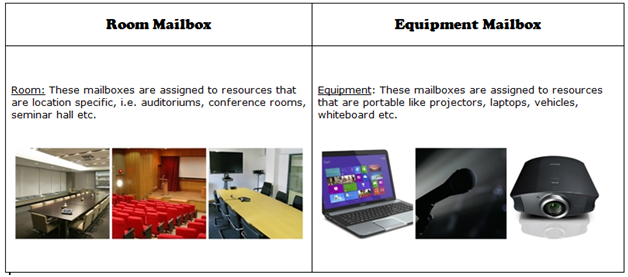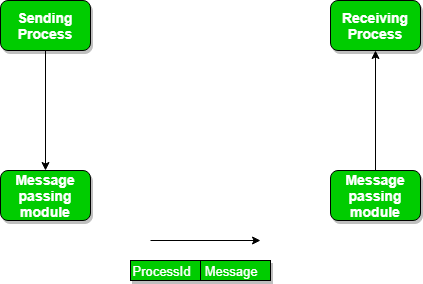Difference Between Mailbox And Message Buffer

- Difference Between Mailbox And Message Buffer And File
- Difference Between Mailbox And Message Buffer And How Does It Work
To those who have already used a version of Outlook in the past, the Windows Mail app will come across as a lightweight variant with some features omitted from the experience. The main difference between Outlook and the Mail app is the target audience. The bundled app with Windows is meant to cater to consumers and those who check their emails on a daily basis. Outlook on-the-other-hand is for business and professionals who rely on email.But just because the Windows Mail app is more basic than Outlook, it doesn't necessarily mean that it's a worse experience. The app itself is a solid client for email, and the accompanying calendar app will handle events, subscriptions to cloud-based calendars just fine. A neat feature of the Mail and Calendar apps is the design language, which fits in comfortably with Windows 10.Various accounts can be added to Windows Mail, including Outlook.com, Exchange (Office 365), Gmail, Yahoo!
Mail, iCloud, as well as usual POP and IMAP accounts. Using Microsoft's hosted email services like Outlook.com will ensure everything is configured and synchronized without much effort.
Simply enter your account credentials, and the app will handle everything else. Other service providers may require additional steps.Thanks to its free, basic feature set, the Windows Mail app has been designed and developed to take full advantage of touch support on tablets and laptops. It's possible to utilize the on-screen keyboard and use the app to filter through messages and reply to contacts.One issue I continue to experience, as well as other Mail app users, is the problem with mail synchronization. Attempting to synchronize all accounts can result in errors, which is not only irritating but requires troubleshooting. Contact integration from connected profiles isn't perfect either, but again this is a more streamlined app and it's possible to hit up contacts when creating (or replying to) emails.I also dislike the fact you need to switch between apps for mail and calendar appointments. But it is free, so there's that huge plus, and not everyone shares my view. Outlook is Microsoft's premium email client and is regarded as one of the best in the business.
There's a good reason for this as the suite has been around for many years as part of Microsoft Office. The company has had time to invest in developing improvements to take the experience to the next level and increase productivity. While the Windows Mail app may just do the job for daily or weekly email checking, Outlook is for those who rely on email.As well as the powerful email client, Microsoft has packed in calendar, contacts and task support.
Simply switch between tabs and everything is loaded up. Office integration is also present, as one would expect from a more connected suite of productivity tools. Then there's the Ribbon system that hides away the countless buttons and features that do pretty much everything one would require.Take a look at some of the feature discrepancies to see if there's anything you require that cannot be done in the Windows Mail app. More information and comparison between the two apps can be found on.There are downsides to Microsoft's more advanced email program.
The first being the plethora of features that may never be used. Do you really need to categorize messages? That and the new Ribbon UI system that Microsoft has implemented into the new Office suite isn't to everyone's liking. It can also feel rather bloated when tasked to handle thousands upon thousands of emails from multiple accounts, but that's a case of not effectively managing clutter.And don't get me started on some of the account setup issues.
I've experienced the following a few times before it starts magically working for some reason. Outlook just can't seem to connect and log in when initially setting up some accounts that require manual labor, asking you to re-enter credentials a few times before finally accepting defeat and connecting everything up.That said, it makes sense for Microsoft to offer more features in the Outlook suite to entice businesses and consumers to upgrade and pay the Office subscription, but if you don't need many of the more advanced features the Mail app will do just fine. Cons:. Requires Office 365 subscription.
More complicated. Setting up accounts can be a pain. Not designed for touch.What say you?Do you prefer the simplicity of Windows Mail (and Calendar) or are you a fan of the more feature-rich Outlook suite? Sound off in the comments!Updated on July 24, 2018: We updated this guide to take into account the latest releases of Outlook and Windows Mail and to make sure all information is up to date.This post may contain affiliate links. See our for more details.
When new to the internet, the difference between web mail and email clients can be confusing to a person. You may have been shown how to use one way but don’t know how to use the other.
We’ll explain here the difference between web mail and email clients.Both web mail and email clients use the internet to read and send mail. What may be confusing is how each of these work.When someone sends you an email it is stored on a email server.
The email server can belong to a company that offers web based email accounts, your ISP provider or your web hosting provider. How you “pick up” your email will depend on what type of email account you have.If you are only using web mail, then the emails that you don’t delete are stored on the email server. With an email client the emails are stored on your computer. Web MailWith web mail, you read or send email through your browser and the web mail interface.Some examples of web mail are:.

Yahoo! Mail. Gmail. Hotmail.
The web mail service provided with your web hosting. The web mail service provided with your ISP (Internet Service Provider) accountAccessing Web MailWhen you access a web mail account you use your browser.
You will be given a web address to access your web mail. We’ll use Yahoo!

Mail as an example. The web address to access Yahoo! Mail is:.
Next, you will need to login. This requires your user name and password. Continuing with our example, enter your Yahoo!
Id and password, then left click, Sign in.If there is an option to remember your login information, avoid this, particularly if you are using a public computer. The login information is saved to a cookie on the machine. The next person who uses the computer will have access to your web based email account if you use the Remember me feature. Once logged in, you can now read the emails sent to your web based email acount and send emails from this email address.Web Based Email TutorialsHere at Basic Computer Information we have some tutorials for web based email accounts:.You can also set up some web based email accounts to be picked up via your email client.
Gmail, your website email accounts.A lot of people who have been taught to use web based email find using an email client intimidating, but really, it’s easier than using web based email.If you are running a business and only know how to use web based mail, it would be a good idea to learn how to use an email client on your computer. This way you could back up the emails from the computer for safe keeping, should your web based email’s server goes down and looses all those important emails. Email ClientAn email client is a piece of software on your computer that you use to read and send emails from your computer. The advantage of using an email client is that the emails are stored on your computer and are accessible faster than using a web based email interface. Also, with an email client you can read the messages you already received without being connected to the internet (a cost savings if you are on dial up).
Difference Between Mailbox And Message Buffer And File
You can also compose email while offline. Once connected again to the Internet, the emails can be sent.There are various email client programs available. Dear Team,So nice about giving the explaination between webmail and Outlook mail client. So i have also another one question which has arised for quite some time. Hope some one might help in answering me.1.
Difference Between Mailbox And Message Buffer And How Does It Work
I have take email services with one of my ISP.I have configured the mail in outlook express.When i send mail from my mail client ( Eg: Outlook express/ Outlook express 2007) the mail which i have sent from my mail client why the same mail is not showing in the sent item of the web mail interfaceThanks and Regards,Srinivas.